Biomolecules Class 12 Notes

Class 12 Chemistry Chapter 14 Biomolecules Notes- Pdf Download
Chapter 14 Biomolecules
Chapter 14 of NCERT notes Class 12 for Chemistry is Biomolecules. NCERT notes are prepared according to the latest programs. This is one of the most important study materials for students to help them review the entire chapter in a short amount of time. CBSE Class 12 Chemistry Chapter 14 covers carbohydrates, proteins, enzymes, vitamins and hormones.
Students participating in the Grade 12 Board exam should practice the text-based questions asked by Vidyakul as the variety of sample questions provided is unparalleled. Read on to learn more.
CBSE CLASS 12th CHEMISTRY 14 NOTES
Points to Remember
Below are some of the key takeaways from NCERT Solutions for Class 12 Chemistry Chapter 14 Biomolecules:
(i) A Carbohydrate is an optically active polyhydroxy aldehyde/ ketone/ molecule that produces such units on hydrolysis. They are further classified into three groups monosaccharides, disaccharides and polysaccharides.
(ii) Glucose, the most important source of energy for mammals, is obtained by the digestion of starch.
(iii) Monosaccharides are held together by glycosidic linkages to form disaccharides or polysaccharides.
(iv) Proteins are the polymers of about twenty different α-amino acids which are linked by peptide bonds.
(v) Proteins which contain only α-amino acids are called simple proteins.
(vi) Enzymes are biocatalysts that speed up the reactions in a biosystem. They are extremely specific and selective in their action. Chemically, all enzymes are proteins.
(vii) Hormones Chemical substances produced in the body’s ductless glands are hormones. They act as intercellular messengers.
Topics and Sub- topics
The Biomolecules chapter is an interesting chapter in Class 12 Chemistry. In this chapter, students will learn about the food components that make up us. Students should be aware of how many different nutrients we need for our full growth and development. You will learn how each nutrient works and plays a role in our well-being and survival. Some topics may seem confusing at first, but practicing the Vidyakul questions will help students gradually dispel all doubts and understand the essence of the topic.
Students can complete each section and prepare for the exam accordingly. Topics and subtopics for NCERT Class 12 Chemistry Chapter 14 Biomolcules are listed in the table below.
Download this solution for FREE Download This PDF
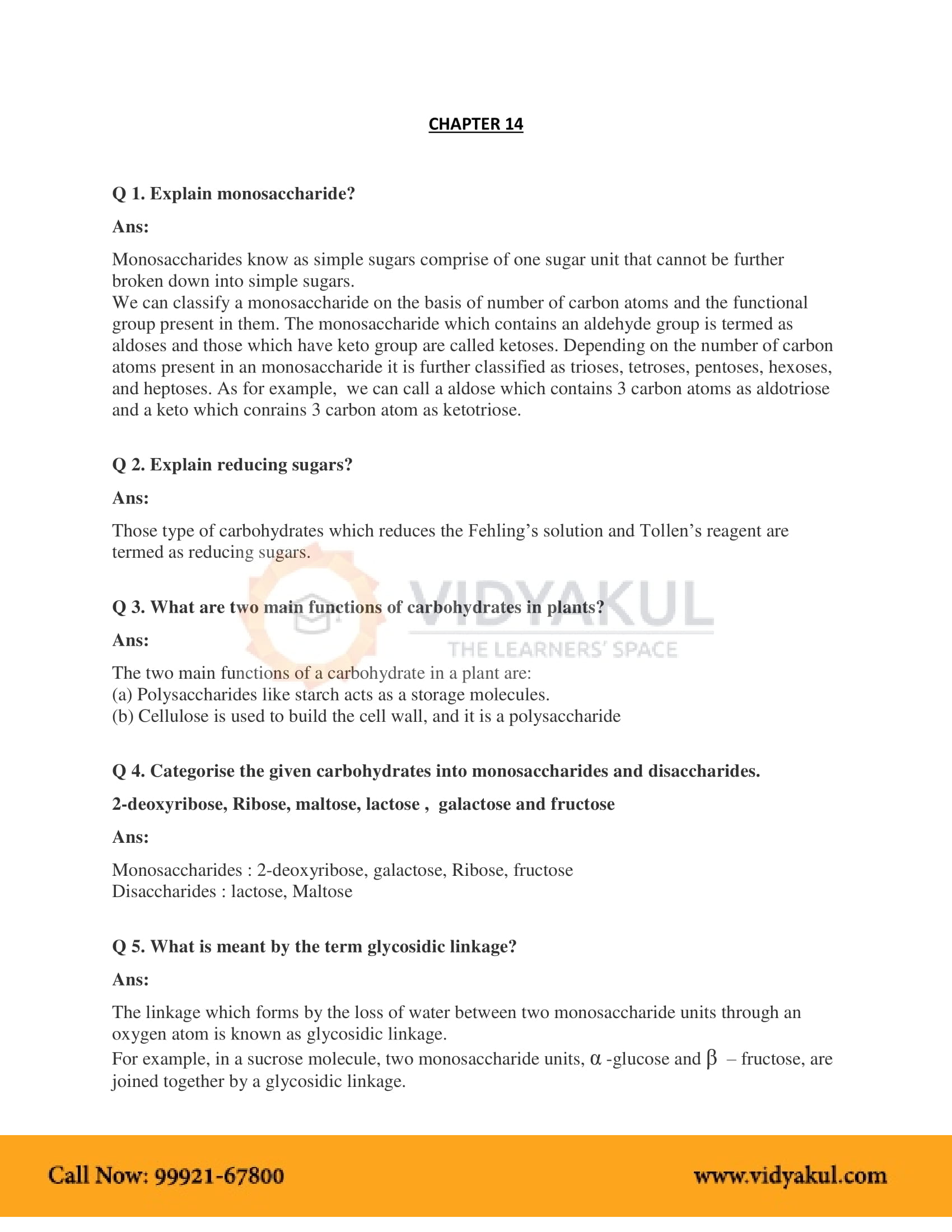
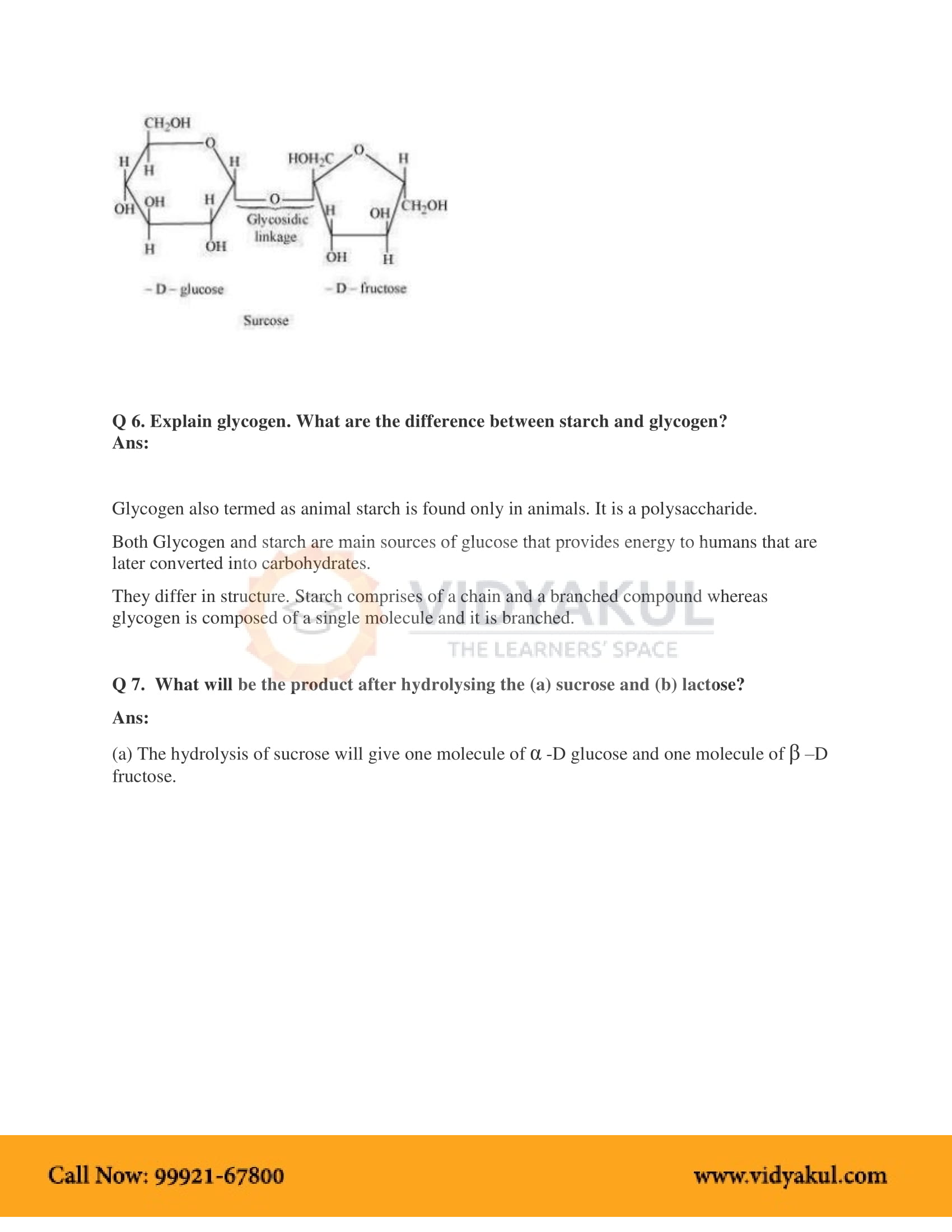
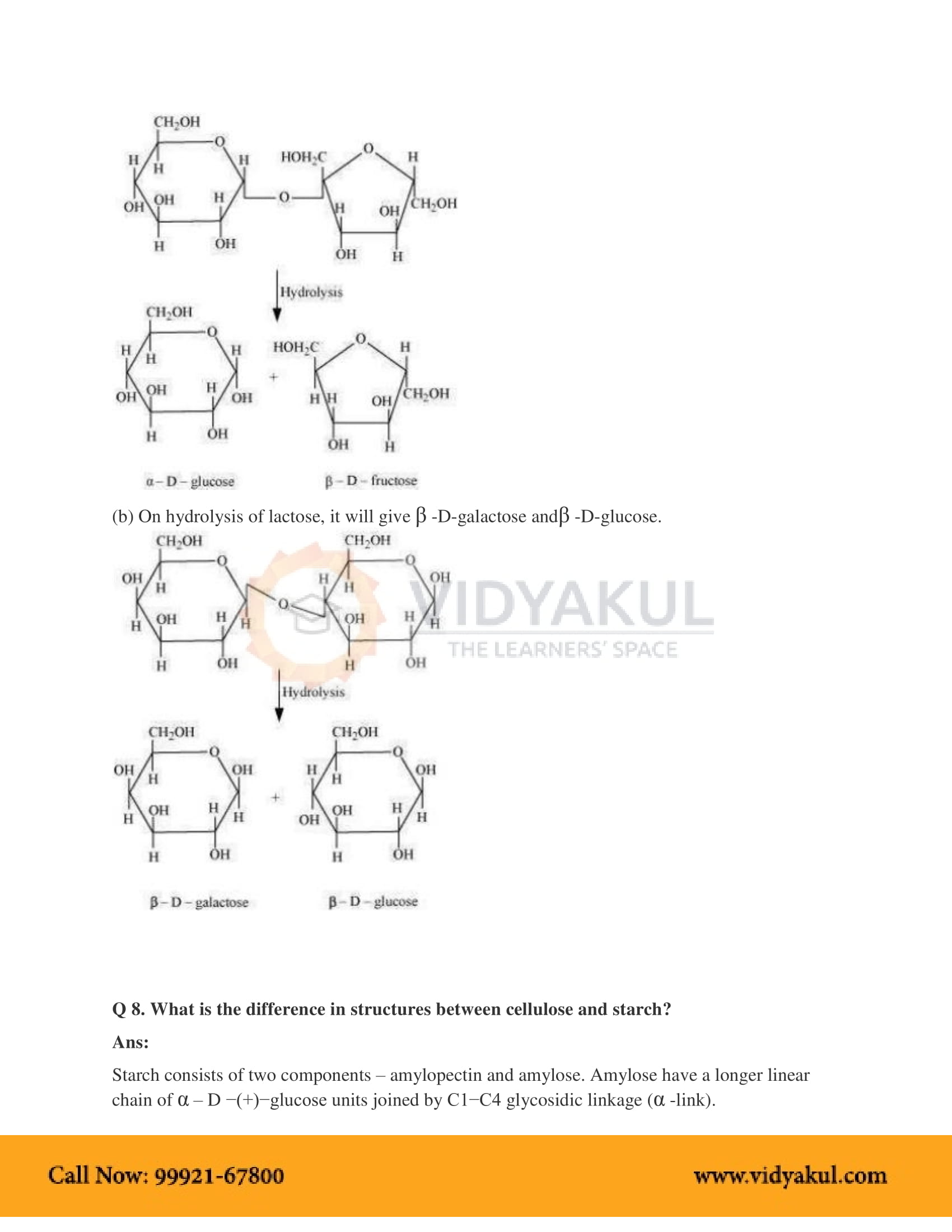

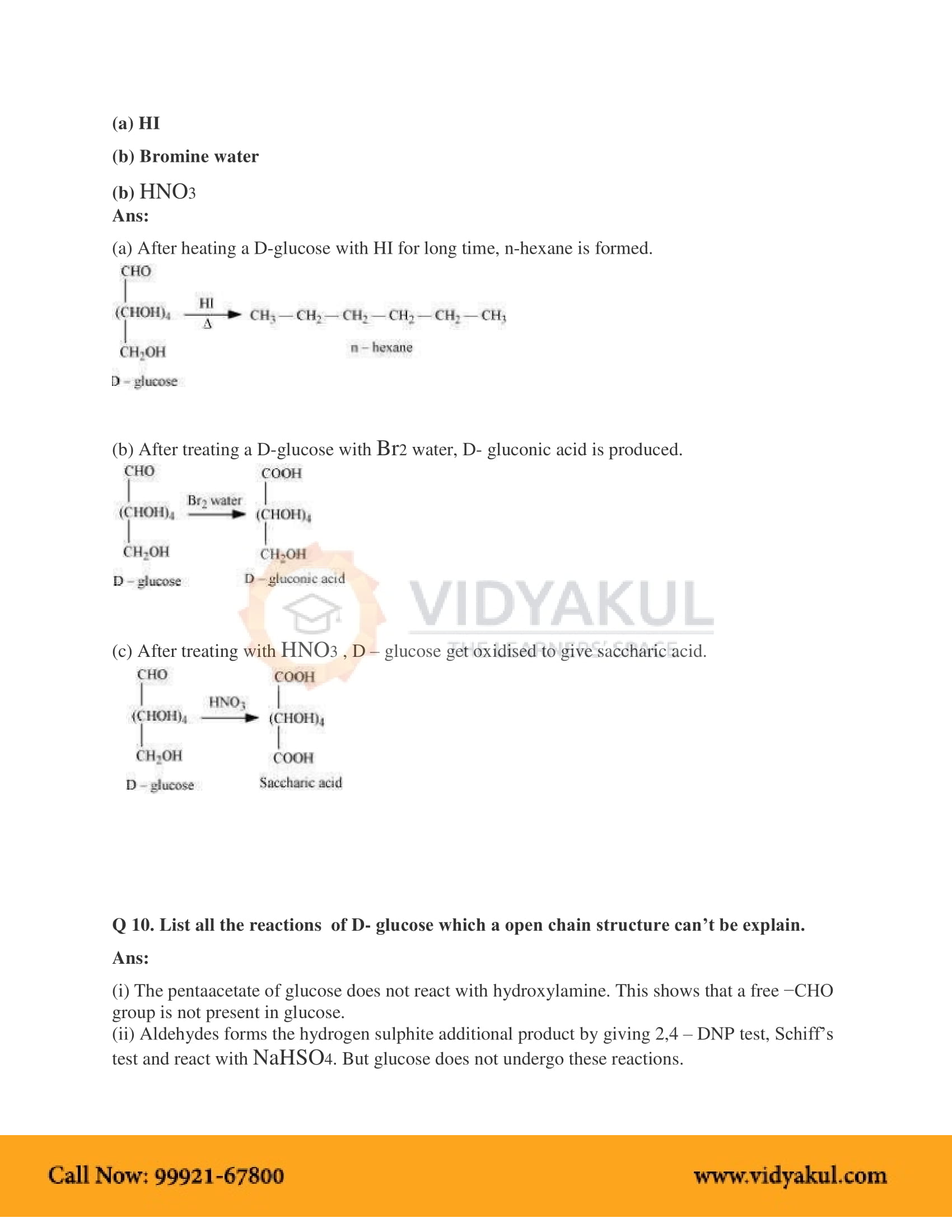

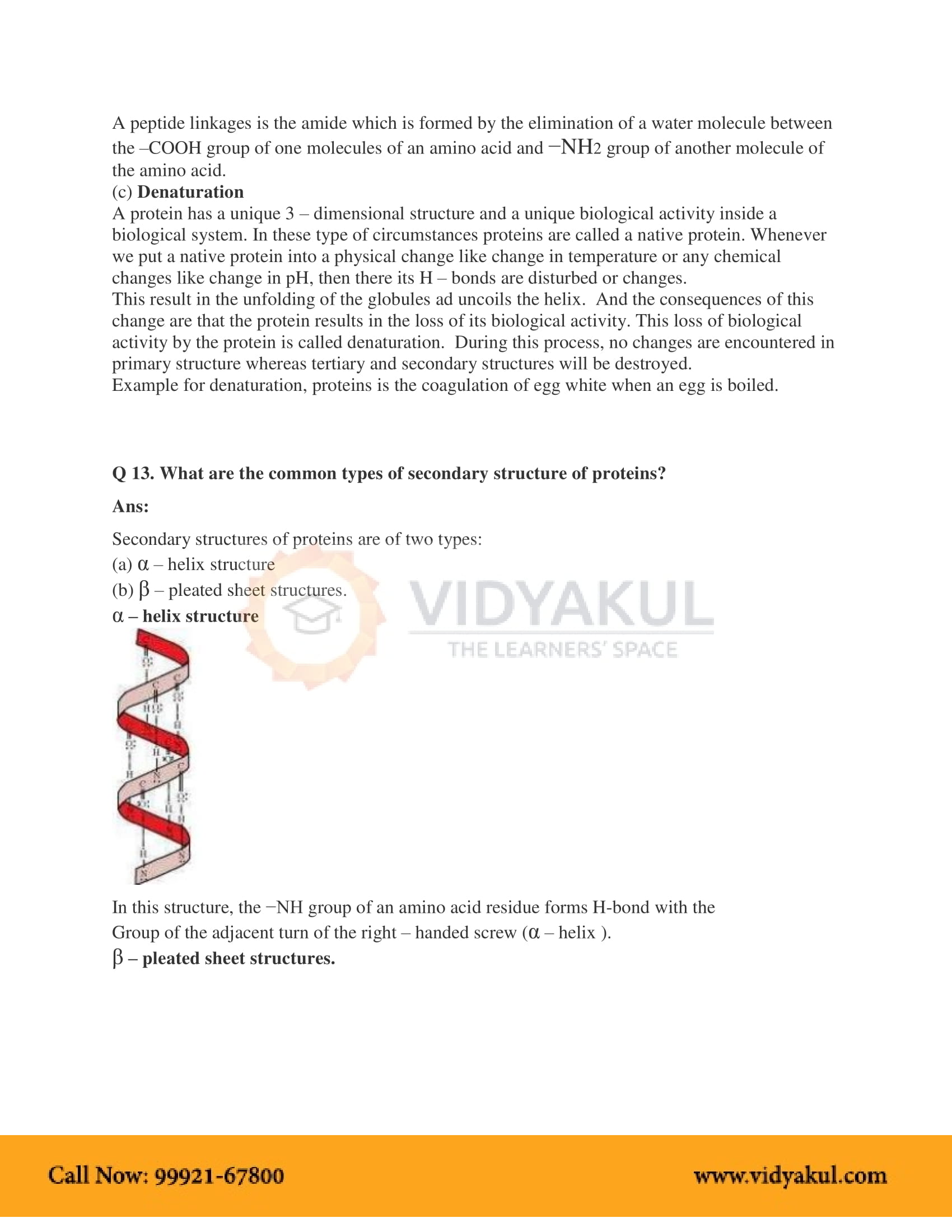
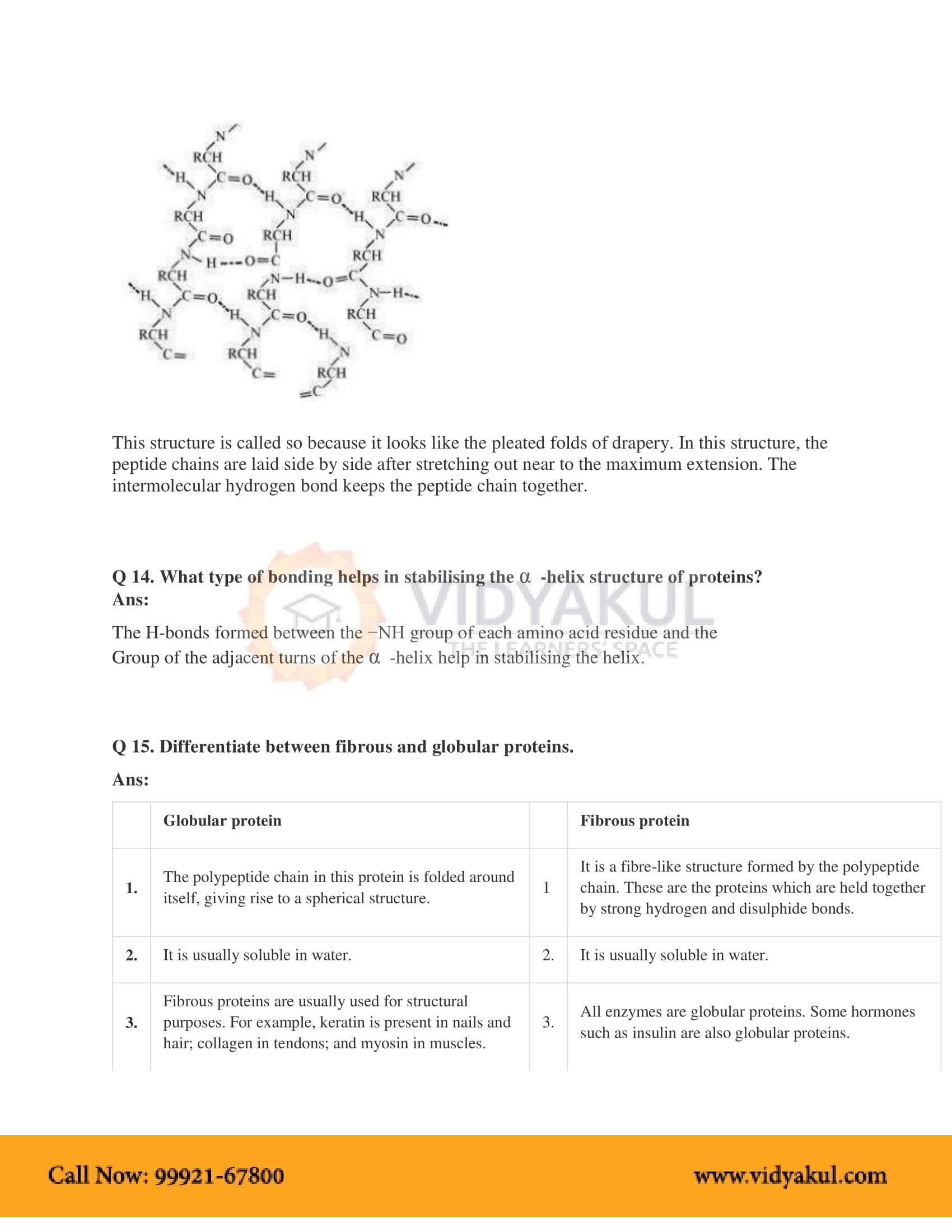
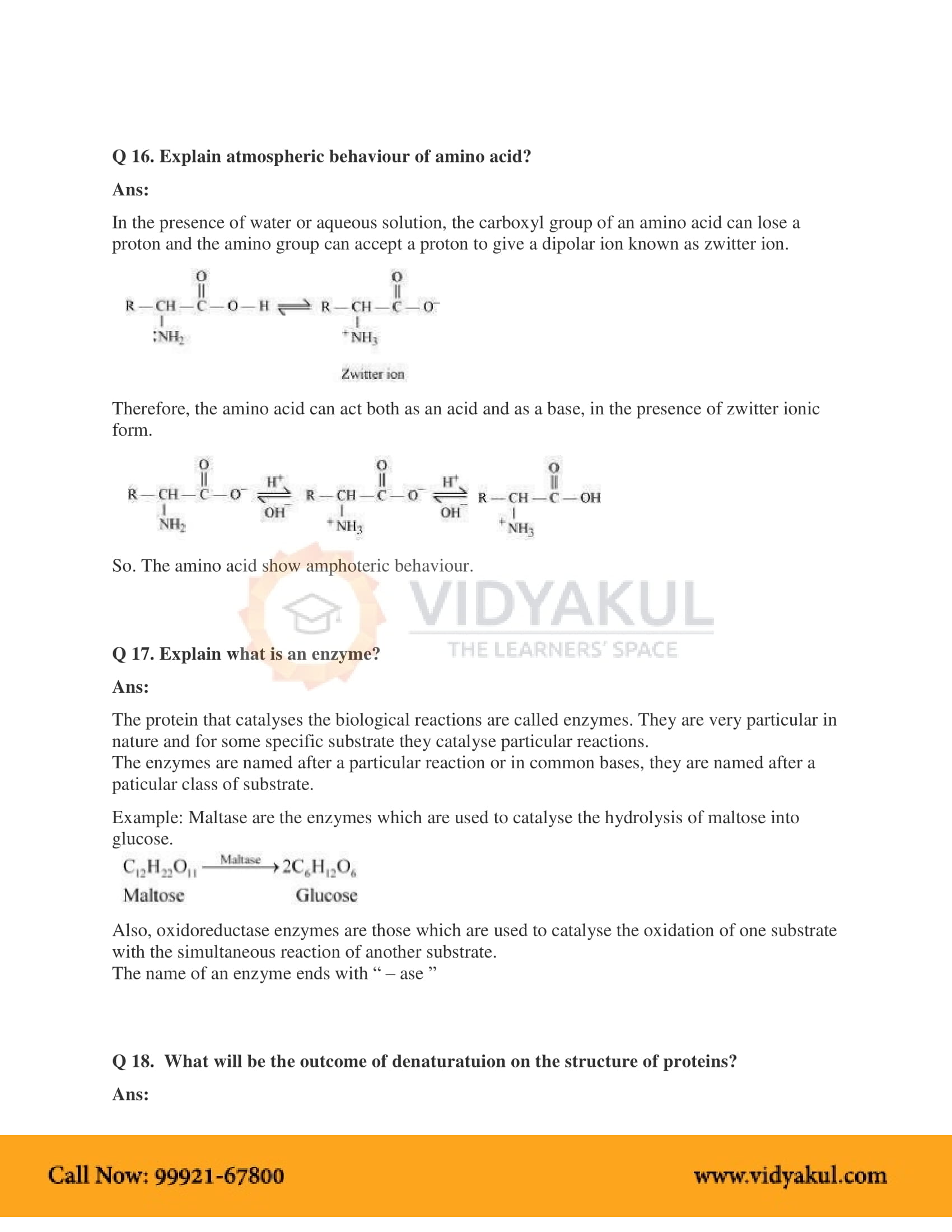
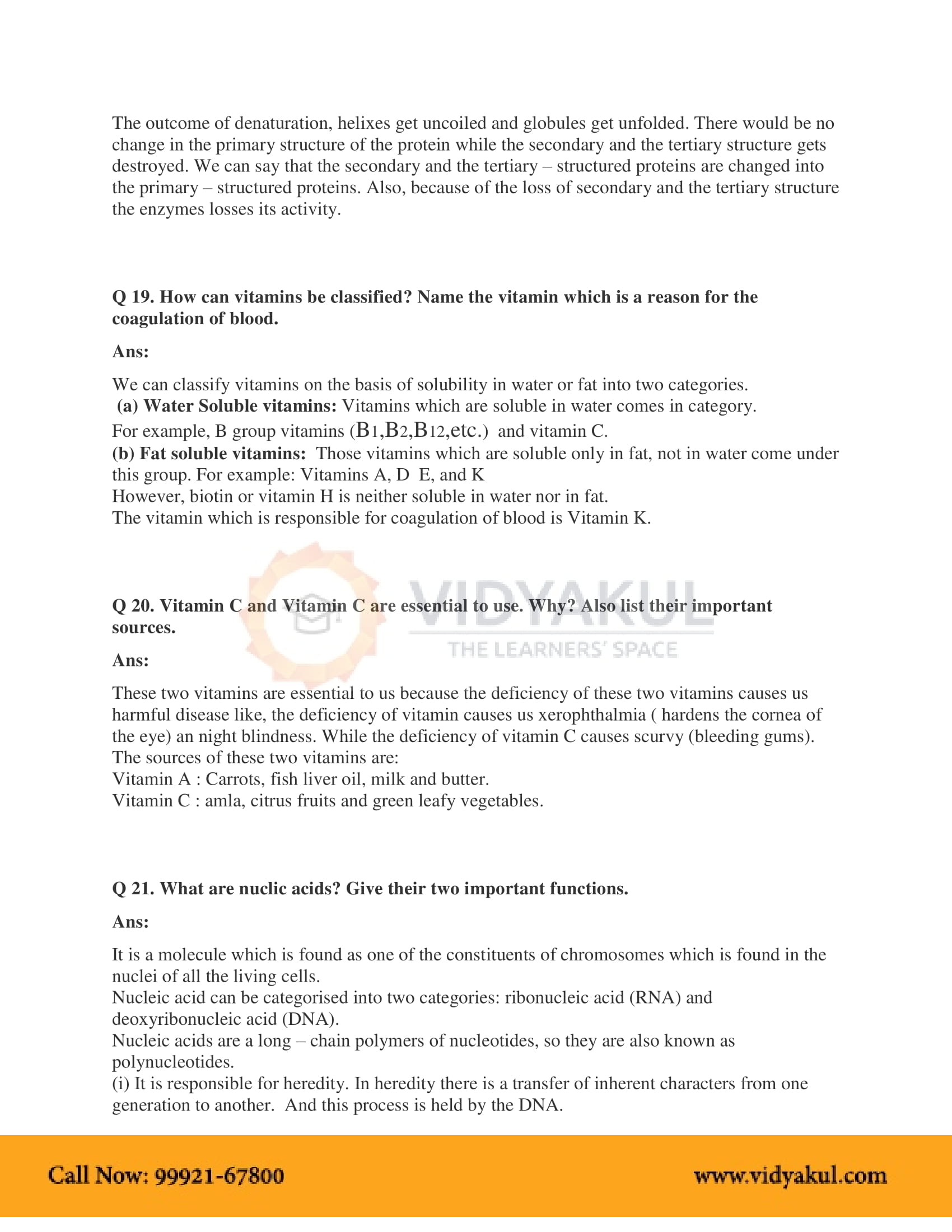



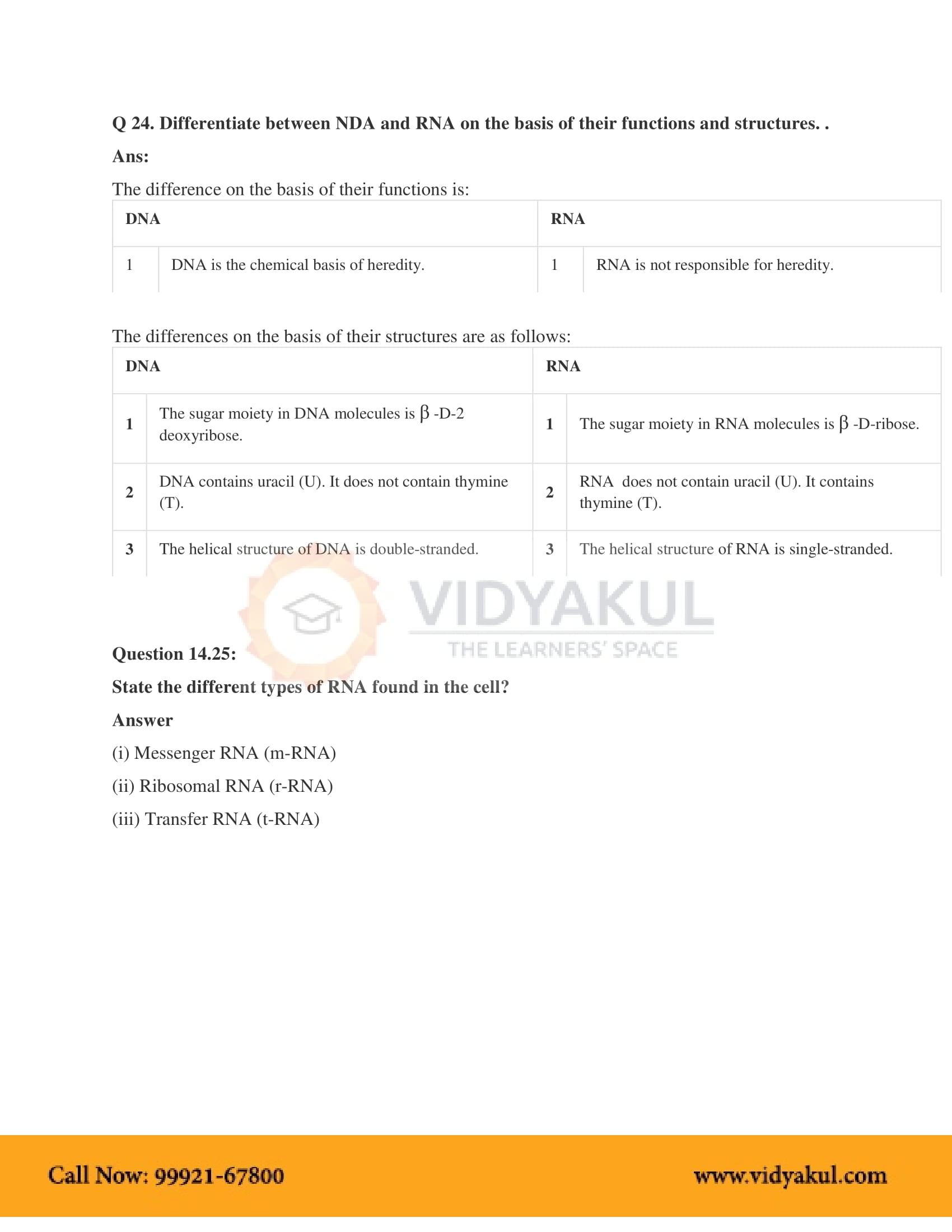
Important Links:
Few Important Questions
What are Biomolecules?
Biomolecules are chemical compounds found in living organisms. For ex., nitrogen, sulfur, phosphorus, carbon, hydrogen, etc.
What are some of the main uses of biomolecules?
Biomolecules have multiple roles to play in the human body. 1. Carbohydrates: Helps in sugar breakdown and glucose creation 2. Lipids: energy supply to cells 3. Proteins: Act as building blocks of life
What is the abbreviation of DNA?
Deoxyribonucleic acid
Practice Questions
How are starch and cellulose structurally different??
What is Peptide linkage?
Define nucleic acids. List their important functions.
Mention the different types of RNA present in the cell?
What are monosaccharides? What are disaccharides? Write the difference between them.



